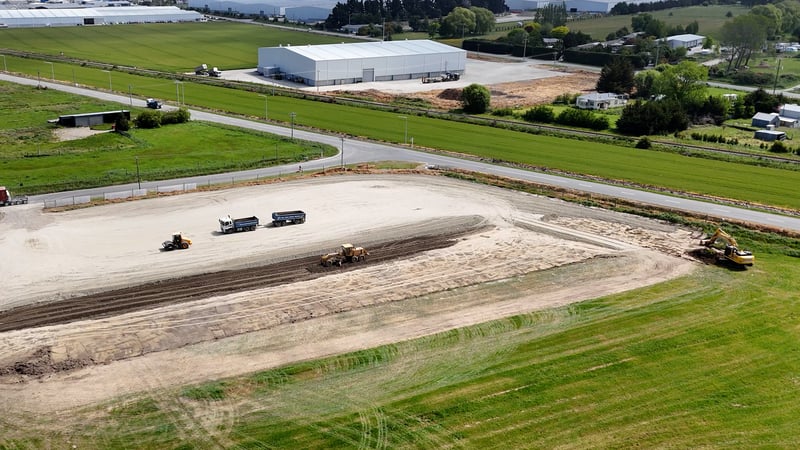What to Expect During the Building Consent Process in New Zealand

For many business owners, the consent process is one of the most confusing parts of a project. If you’ve built a house before, you will have some idea, but commercial consents are different. If you haven’t dealt with council before, it can feel like a maze.
This guide will walk you through what actually happens during the building consent process, the stages you’ll encounter, what delays you might face, and how to approach it in a way that gives you the best chance of keeping things on track.
 CONTENTS:
CONTENTS:
- What kind of consent do you need?
- Should you split your building consent into stages?
- Where councils can ask questions
Start Here: What kind of consent do you need?
Before we even get to the building consent process itself, it’s critical to determine which consents your project actually requires. In most regions of New Zealand, there are two levels of council to deal with:
- District Council (e.g. Christchurch City, Selwyn, Hamilton City)
- Regional Council (e.g. Environment Canterbury (ECan), Waikato Regional Council)
Depending on your site and building design you need:
- A district-level resource consent
- A regional-level resource consent
Resource consent may be needed if you breach rules under the district or regional plans. If your site and design are compliant, you may only need a building consent.
Examples:
- In Canterbury, you might deal with Christchurch City Council and Environment Canterbury.
- In the Waikato, it could be Hamilton City Council and Waikato Regional Council.
It’s important to have your project compliant with District and Regional Plans as much as possible before applying for a Building Consent. This will help avoid longer delays in the process. It’s a good idea to get clear advice on this early. Your architect or lead consultant should help you assess what’s required.
District, City, and Regional Councils by Region
Below is a complete breakdown of every region, the councils operating within it, and whether you’ll be dealing with one or both layers of government.
|
Number of Councils |
Region |
District / City Councils |
Regional Council |
|
3 |
Northland |
Whangārei District Council, Far North District Council, Kaipara District Council |
Northland Regional Council |
|
1 |
Auckland (13 wards) |
Auckland Council (unitary authority – functions as both district and regional) |
Auckland Council |
|
10 |
Waikato |
Hamilton City Council, Waikato District Council, Waipā District Council, Matamata-Piako District Council. |
Waikato Regional Council |
|
7 |
Bay of Plenty |
Tauranga City Council, Western Bay of Plenty District Council, Whakatāne District Council, etc. |
Bay of Plenty Regional Council |
|
1 |
Gisborne |
Gisborne District Council (unitary authority – both district and regional) |
Gisborne District Council |
|
4 |
Hawke’s Bay |
Napier City Council, Hastings District Council, Central Hawke’s Bay District Council, Wairoa District Council |
Hawke’s Bay Regional Council |
|
3 |
Taranaki |
New Plymouth District Council, Stratford District Council, South Taranaki District Council |
Taranaki Regional Council |
|
7 |
Manawatū-Whanganui |
Palmerston North City Council, Whanganui District Council, Horowhenua District Council, Manawatū District Council, etc. |
Horizons Regional Council (Manawatū-Whanganui Regional Council) |
|
8 |
Wellington |
Wellington City Council, Hutt City Council, Upper Hutt City Council, Porirua City Council, Kapiti Coast District Council. |
Greater Wellington Regional Council |
|
2 |
Tasman / Nelson |
Nelson City Council (unitary), Tasman District Council (unitary) |
Nelson and Tasman each serve both roles |
|
1 |
Marlborough |
Marlborough District Council (unitary authority – both roles) |
Marlborough District Council |
|
3 |
West Coast |
Buller District Council, Grey District Council, Westland District Council |
West Coast Regional Council |
|
9 |
Canterbury |
Christchurch City Council, Selwyn District Council, Waimakariri District Council, Timaru District Council. |
Environment Canterbury (ECan) |
|
5 |
Otago |
Dunedin City Council, Queenstown Lakes District Council, Central Otago District Council, Clutha District Council |
Otago Regional Council |
|
3 |
Southland |
Invercargill City Council, Southland District Council, Gore District Council |
Environment Southland (Southland Regional Council) |
|
1 |
Chatham Islands |
Chatham Islands Council (functions as both district and regional) |
Chatham Islands Council |

Should you split your building consent into stages?
Once you’ve confirmed what consents are required, and you’re preparing to lodge your building consent, another strategic decision might come up: whether to split your application.
For straightforward industrial or agricultural buildings, there’s usually no need. But for more complex commercial projects – say a warehouse with a detailed office fit-out, advanced fire requirements or staged construction timelines – a staged consent might help you get on site sooner.
This approach must be carefully managed with your design team. Every consultant needs to understand which portion of work falls into which consent stage.
Once your documents are ready: The consent process begins
Assuming your full design documentation is complete and your consultants have submitted everything to council (see our article on What Consultants You’ll Need for a Commercial Build), here’s what the building consent process typically looks like.
1. Vetting Stage
The application is submitted, but the clock hasn’t started yet. First, council performs a vetting check – a high-level review to confirm all required documentation is present.
If something is missing, they won’t accept the application for processing. The 20 working days only begin once vetting is complete.
- If a minor piece of documentation is missing, your consultant might choose to lodge anyway, get it into the system, and follow up shortly after.
- You may receive a rejection notice if council feels the submission is incomplete. Don’t panic – it often just requires a quick fix.
- This is also the point where council issues a deposit invoice, which is paid by the landowner directly to council.
2. Building Code Review
Once your application has been accepted, the building team assesses your project for compliance with the New Zealand Building Code.
- They’ll review structure, durability, fire safety, accessibility, external and internal moisture control, stormwater and surface water design, sewer and wastewater design and more.
- This is often where most questions (RFIs) come back from council.
Even highly experienced consultants will get questions from council. That’s not a red flag – it’s standard. Complex projects very rarely pass through with no RFIs at all. There are many areas of the Building Code that are open to interpretation.
3. Planning Review - (this is done concurrently with the Building Code Review)
Now the planning department checks whether your project complies with the district plan.
- Ideally, any issues here would have already been addressed with a resource consent, if so, a check for compliance with the Resource Consent is done at this time.
- If not, the project might be held up while the planning issue is resolved.
- Planning queries can pause the 20-day clock.
4. Final Invoicing & Release
Once all departments are satisfied:
- Council will issue a final invoice
- Your consent will not be released until it is paid in full
Where council can ask questions
Questions can come at any stage: vetting, building and planning. The 20-day clock pauses each time a request for information (RFI) is issued.
Sometimes councils will issue a large batch of questions. This can feel overwhelming. Don’t be alarmed.
A good project manager or architect will handle this for you. They'll coordinate responses from engineers, fire consultants, planners, and whoever else is needed.
In some cases, it may take a week or two to respond fully, especially if external consultants are required to update reports.
Councils will not resume the clock until all questions are answered in full. Partial responses will not be accepted.
This process is iterative. One or two rounds of RFIs is normal. It doesn’t necessarily mean your team is doing a bad job. It reflects the grey areas in how the Building Code is interpreted and applied.
How long does all this really take?
The 20 working days is only the processing time – it doesn’t include:
- Time spent in vetting
- Time paused during RFIs
- Time consultants take to respond
- Time to process final invoices
So, while we have seen some consents issued in under 20 working days, it’s not the norm. Planning for longer is wise. For a deeper look at timelines and how to build realistic buffers into your programme, see our guide on How long it really takes to Build a Commercial Building.
What affects timing most?
- How busy your local council is
- The completeness and quality of your application
- How quickly your team can respond to council queries
- Whether resource consents are running in tandem

Final thought: Ask the right questions early
The best way to avoid surprises is to work with an experienced team who understand the process and the councils involved. At Attika, we manage this process from end to end. We know where the roadblocks usually appear, and we help you avoid them.
Speak to your lead consultant early. Understand what consents are needed, what a realistic timeline looks like for your project, and where council is likely to focus their attention.
This upfront clarity can save you months down the line.
If you are in the process of planning a new industrial or commercial building you may also be interested in our articles on the most efficient way to design an industrial building or the cost per m² of a commercial or industrial building. Alternatively please feel free to reach out to the team directly.




